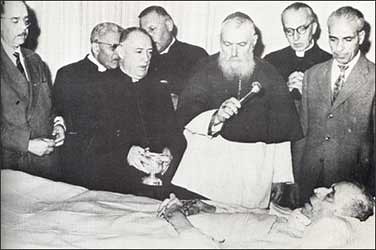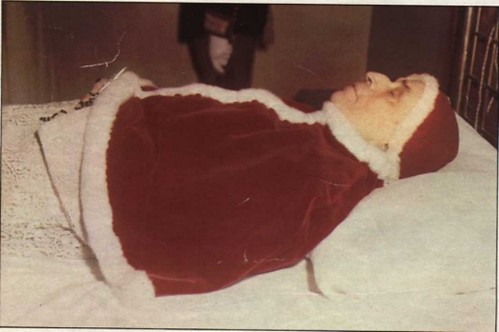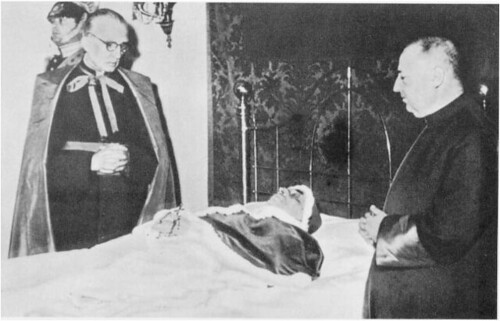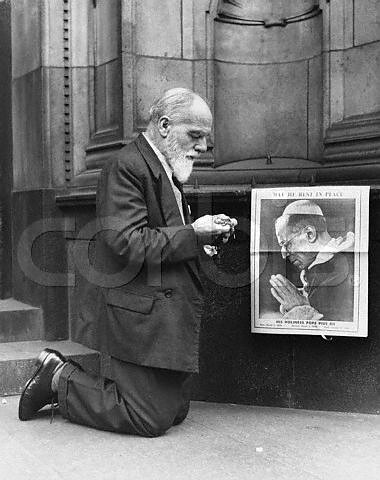I spent this weekend reading the majority of John Senior's fantastic work The Restoration of Christian Culture. I can not recommend it highly enough to my readers. I'd like to share some of the passages from the book as well as some brief thoughts.
Quoting from John Senior's fantastic work The Restoration of Christian Culture, "Work is a physical necessity; if you don't work you don't eat. Prayer is a necessity of obligation; if you don't pray you will not enter the Kingdom. Prayer is a duty, an office; it is free, voluntary payment of the debt we owe to God for existence and grace. The Latin word for duty is officium, and the perfect prayer of the Church is its Divine Office; St. Benedict call it the opus Dei, the work of God" (60).
John Senior continues, "I have cited the Latin for the meaning of many words not for the pretense of learning, but because their meaning is Latin. Latin is the language of the Roman Catholic Church; you can repudiate the tradition and overthrow the Church; but you cannot have the tradition and the Church without its language. And though the Second Vatican Council permitted the substitution of vernacular liturgies where pastoral reasons suggested their usefulness, it commanded that the Latin be preserved. The Catholic Faith is so intimately bound to the two thousand years of Latin prayers any attempt to live the Catholic life without them will result in its attrition and ultimate apostasy - which we have witnessed even in the few years of the vernacular experiment. We must return to the Faith of our fathers by way of prayer of our fathers" (60 - 61).
John Senior's works are beautifully said and express an absolute reality - the Church is timeless; she is outside of time. Only by restoring true Christian culture, as Senior explains throughout his book, will Christ again reign in our hearts, our homes, and our families. Christ must reign. And how can we bring about the reign of Christ without frequent prayer? Prayer is necessary. It is essential for the spiritual life. A life spent in good works of charity that has no prayer is a life built on bad soil. And no soul whose life is built in bad soil can inherit everlasting life.
You might be concerned and ask "how many hours of prayer must I perform daily?" Quoting again from Senior on the topic, "The strictly cloistered monk and nun lead that life in the highest degree, but each of us in his station must pay his due. There are three degrees of prayer: The first, of the consecrated religious, is total. They pray always, according to the counsel of Our Lord. Their whole life is the Divine Office, Mass, spiritual reading, mental prayer... They pray eight hours, sleep eight hours and divine the other eight between physical work and recreation... The third degree is for those in the married state (or single life) who offer a tithe of their time for prayer - about two and a half hours per day - with eight hours for work, eight for sleep, and the remaining five and a half for recreation with the family" (62-63).
Make an effort - an obligation - pray the Divine Office and other pious devotions for 2 and a half hours each day. And no prayer is greater than the Mass. If possible, attend Holy Mass daily. We quote one final time from Senior who said, "Whatever we do in the political and social order, the indispensable foundation is prayer, the heart of which is the Holy Sacrifice of the Mass, the perfect prayer of Christ Himself, Priest and Victim, recreating in an unbloodly manner the bloody, selfsame Sacrifice of Calvary. What is Christian Culture? It is essentially the Mass" (16-17).
To conclude with his words on our culture: "Our Lord explains in the Parable of the Sower that the seed of His love will only grow in a certain soil - and that is the soil of Christian Culture, which is the work of music in the wide sense, including as well as tunes that are sung, art, literature, games, architecture - all so many instruments in the orchestra which plays day and night the music of lovers; and if it is disordered, then the love of Christ will not grow. It is an obvious fact that here in the United States now, the Devil has seized these instruments to play a danse macabre, a dance of death, especially through what we call the "media," the film, television, radio, record, book, magazine and newspaper industries. The restoration of culture, spiritually, morally, physically, demands the cultivation of the soil in which the love of Christ can grow, and that means we must, as they say, rethink priorities" (21).
Read more >>
Quoting from John Senior's fantastic work The Restoration of Christian Culture, "Work is a physical necessity; if you don't work you don't eat. Prayer is a necessity of obligation; if you don't pray you will not enter the Kingdom. Prayer is a duty, an office; it is free, voluntary payment of the debt we owe to God for existence and grace. The Latin word for duty is officium, and the perfect prayer of the Church is its Divine Office; St. Benedict call it the opus Dei, the work of God" (60).
John Senior continues, "I have cited the Latin for the meaning of many words not for the pretense of learning, but because their meaning is Latin. Latin is the language of the Roman Catholic Church; you can repudiate the tradition and overthrow the Church; but you cannot have the tradition and the Church without its language. And though the Second Vatican Council permitted the substitution of vernacular liturgies where pastoral reasons suggested their usefulness, it commanded that the Latin be preserved. The Catholic Faith is so intimately bound to the two thousand years of Latin prayers any attempt to live the Catholic life without them will result in its attrition and ultimate apostasy - which we have witnessed even in the few years of the vernacular experiment. We must return to the Faith of our fathers by way of prayer of our fathers" (60 - 61).
John Senior's works are beautifully said and express an absolute reality - the Church is timeless; she is outside of time. Only by restoring true Christian culture, as Senior explains throughout his book, will Christ again reign in our hearts, our homes, and our families. Christ must reign. And how can we bring about the reign of Christ without frequent prayer? Prayer is necessary. It is essential for the spiritual life. A life spent in good works of charity that has no prayer is a life built on bad soil. And no soul whose life is built in bad soil can inherit everlasting life.
You might be concerned and ask "how many hours of prayer must I perform daily?" Quoting again from Senior on the topic, "The strictly cloistered monk and nun lead that life in the highest degree, but each of us in his station must pay his due. There are three degrees of prayer: The first, of the consecrated religious, is total. They pray always, according to the counsel of Our Lord. Their whole life is the Divine Office, Mass, spiritual reading, mental prayer... They pray eight hours, sleep eight hours and divine the other eight between physical work and recreation... The third degree is for those in the married state (or single life) who offer a tithe of their time for prayer - about two and a half hours per day - with eight hours for work, eight for sleep, and the remaining five and a half for recreation with the family" (62-63).
Make an effort - an obligation - pray the Divine Office and other pious devotions for 2 and a half hours each day. And no prayer is greater than the Mass. If possible, attend Holy Mass daily. We quote one final time from Senior who said, "Whatever we do in the political and social order, the indispensable foundation is prayer, the heart of which is the Holy Sacrifice of the Mass, the perfect prayer of Christ Himself, Priest and Victim, recreating in an unbloodly manner the bloody, selfsame Sacrifice of Calvary. What is Christian Culture? It is essentially the Mass" (16-17).
To conclude with his words on our culture: "Our Lord explains in the Parable of the Sower that the seed of His love will only grow in a certain soil - and that is the soil of Christian Culture, which is the work of music in the wide sense, including as well as tunes that are sung, art, literature, games, architecture - all so many instruments in the orchestra which plays day and night the music of lovers; and if it is disordered, then the love of Christ will not grow. It is an obvious fact that here in the United States now, the Devil has seized these instruments to play a danse macabre, a dance of death, especially through what we call the "media," the film, television, radio, record, book, magazine and newspaper industries. The restoration of culture, spiritually, morally, physically, demands the cultivation of the soil in which the love of Christ can grow, and that means we must, as they say, rethink priorities" (21).





.jpg)



.jpg)
.jpg)
.jpg)
.jpg)
.jpg)
.jpg)
.jpg)
.jpg)
.jpg)
.jpg)
.jpg)
.jpg)
.jpg)
.jpg)

.jpg)
.jpg)
.jpg)
.jpg)
.jpg)
.jpg)
.jpg)
.jpg)
.jpg)

.jpg)
.jpg)
.jpg)
.jpg)




.jpg)
.jpg)
.jpg)
.jpg)
.jpg)





